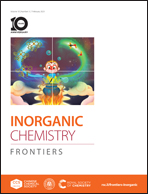Confined replacement synthesis of SnSe nanoplates in N-doped hollow carbon nanocages for high-performance sodium–ion batteries†
Abstract
Transition metal selenides are regarded as promising alternatives for sodium-ion batteries (SIBs) owing to their high theoretical capacity based on the conversion reaction. However, the poor electrical conductivity, sluggish reaction kinetics, and drastic volume change during cycling severely restrict their practical applications. Herein, we report a facile confined replacement strategy for the synthesis of a yolk–shell nanoarchitecture composed of SnSe nanoplates encapsulated into N-doped hollow carbon nanocages (SnSe@N-HCNs) via strong C–Se and Sn–C bonding. The favorable yolk–shell structure combined with the strong interface coupling by chemical bonds not only effectively buffer the large volume expansion of SnSe during cycling but also greatly promote the rapid electron/ion transfer, enabling remarkable pseudocapacitive Na+ ion storage and high-power capability. As a result, the SnSe@N-HCN anode exhibits a large reversible capacity of 516 mA h g−1 at 0.2 A g−1, exceptional high-rate capability (313 mA h g−1 at 10 A g−1) and long-term cycling stability over 1000 cycles. Impressively, when coupled with a hollow Na3V2(PO4)3@C cathode in a sodium-ion full cell, it delivers a high energy density of 177 W h kg−1 at power density of 1200 W kg−1 based on the total mass of active materials. The present work offers a new dimension in material design for high performance energy storage devices.

- This article is part of the themed collection: 2023 Inorganic Chemistry Frontiers HOT articles


 Please wait while we load your content...
Please wait while we load your content...
